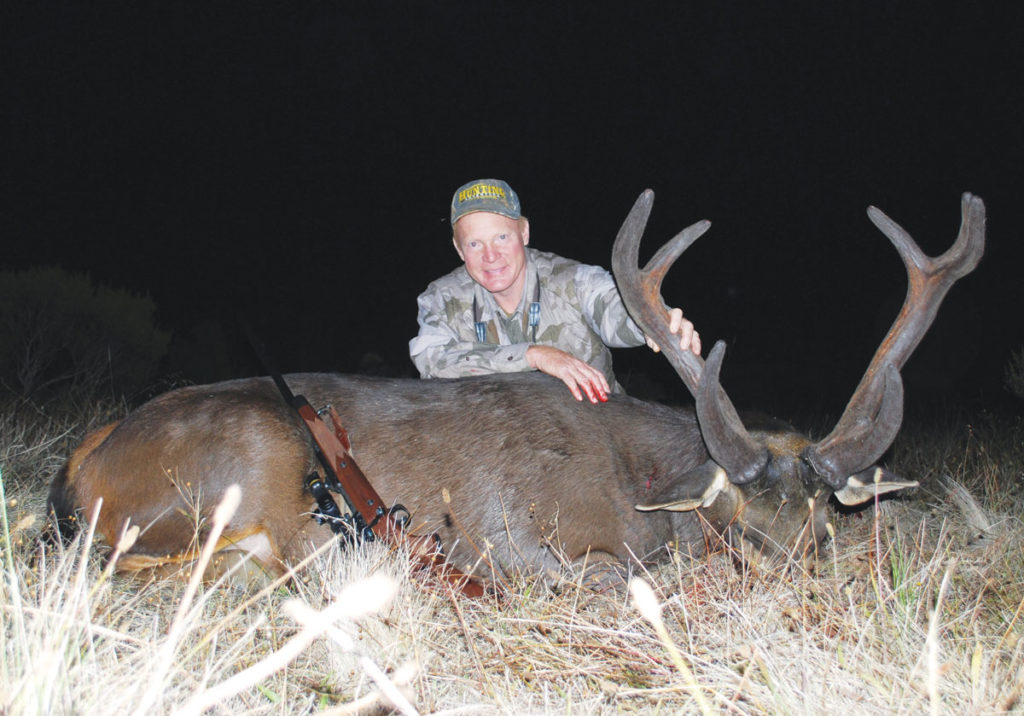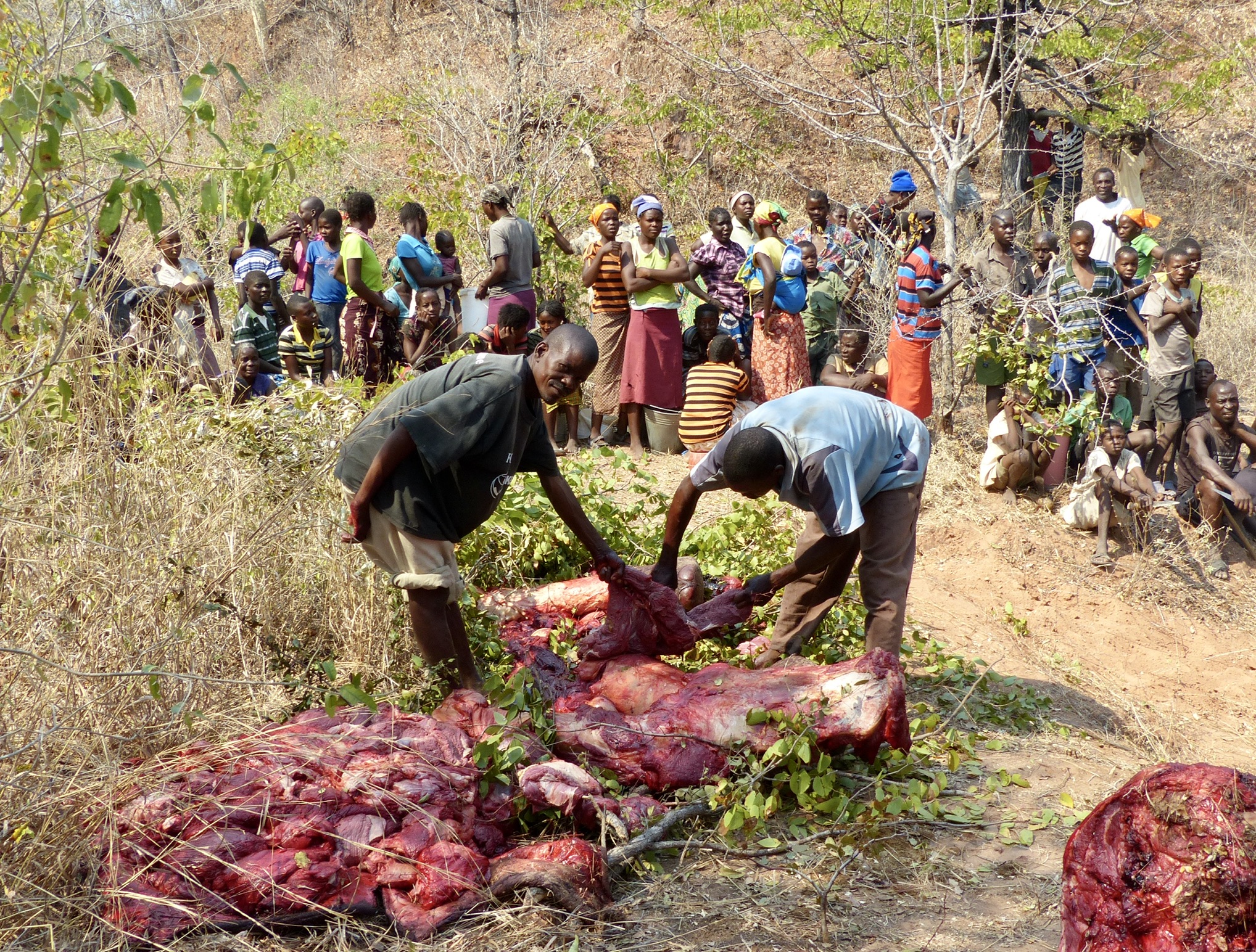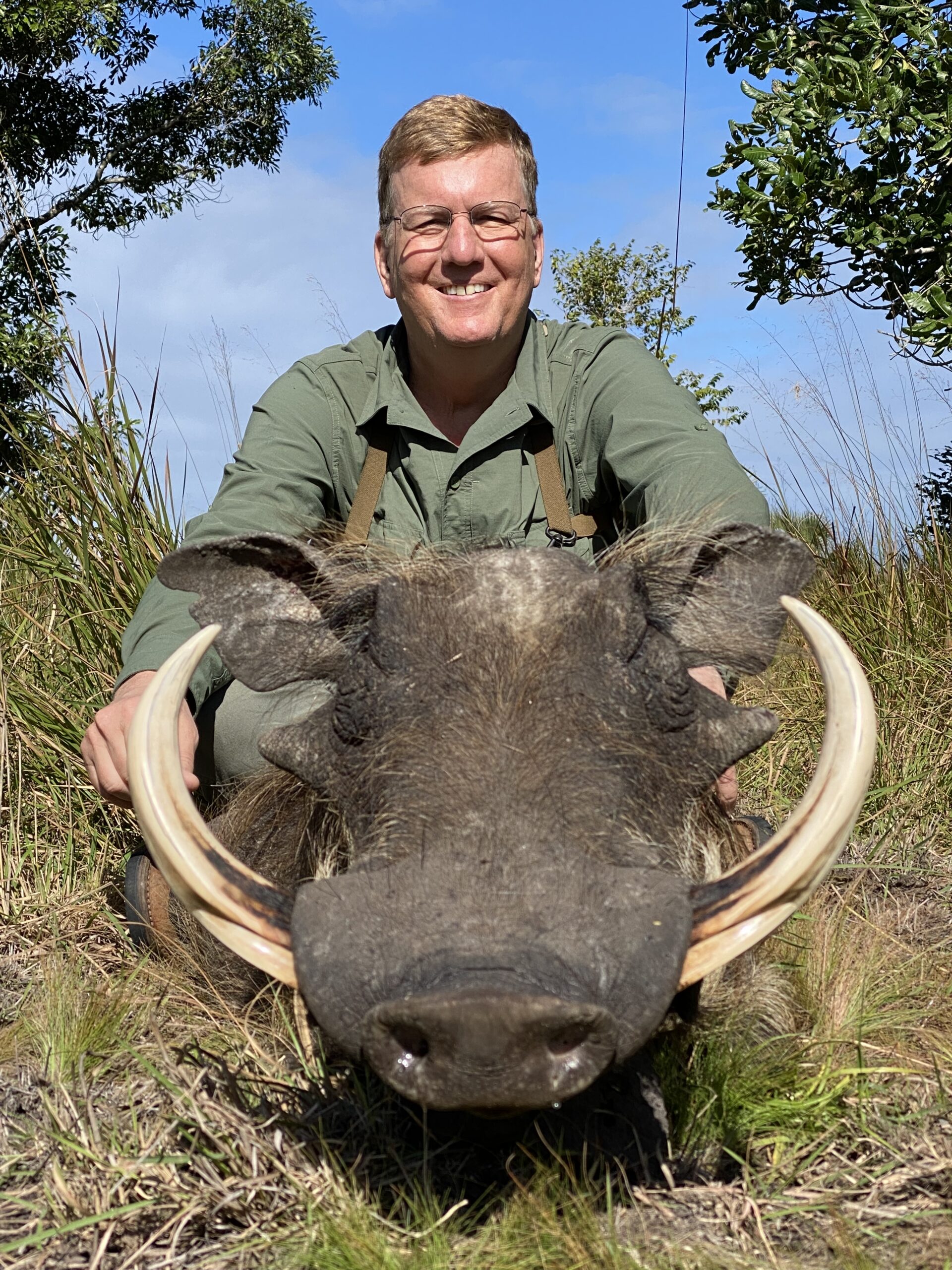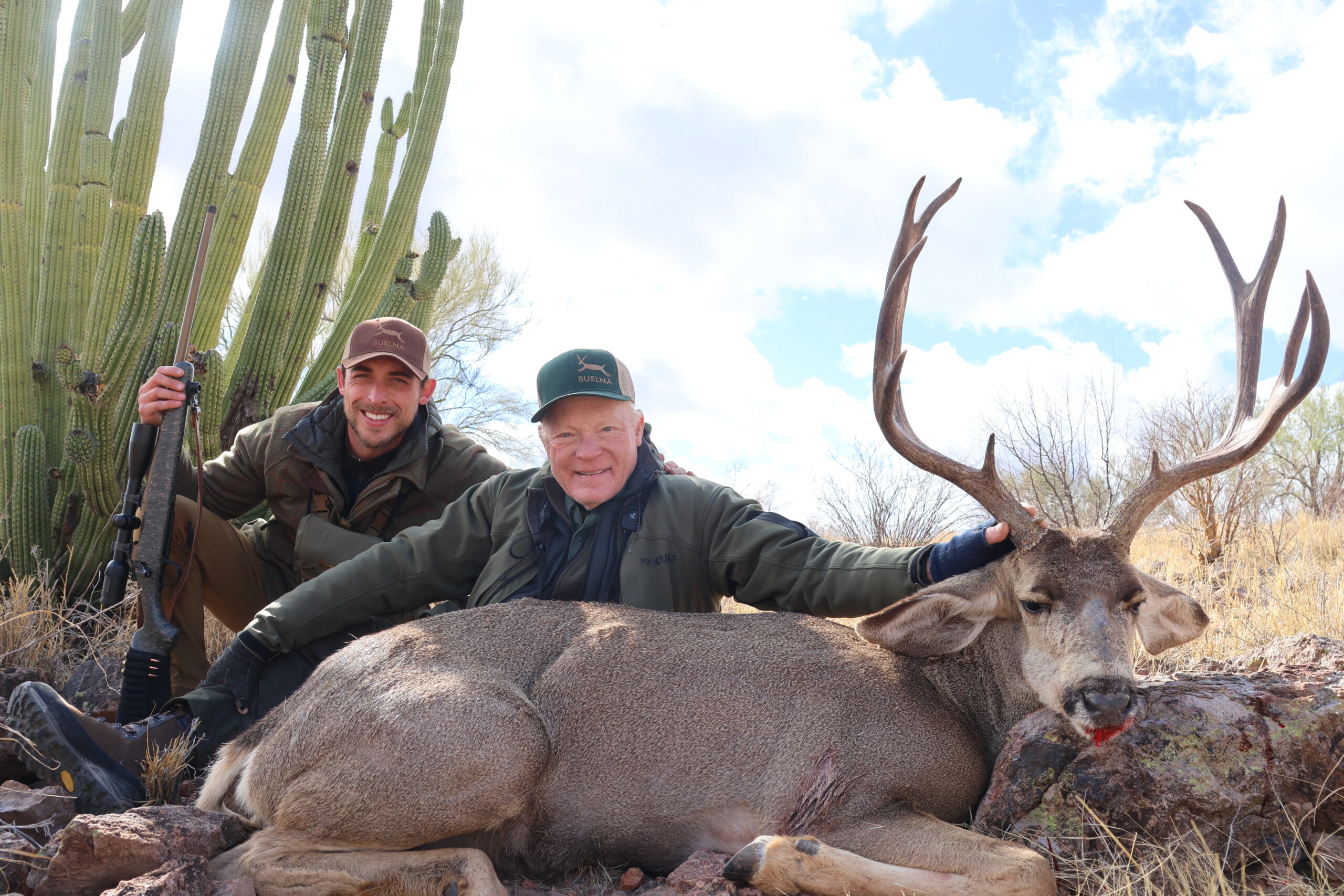By Craig Boddington
Some hunters strictly avoid nonnative, introduced big-game species. I respect this ethic, and trust that those same hunters also eschew ring-necked pheasants, chukars and Hungarian partridges here in North America. Let’s face it: The hand of man has left fingerprints all over the globe, and sometimes it’s very difficult to determine exactly what is “native” and what is not.
Fallow deer, for instance, are thought of as a European deer–but they have been moved around for so long that their exact origin isn’t entirely clear. They are now huntable on every continent save Antarctica, and even, in most regions, offer a choice between free range and estate hunting. So, since we consider there are six “hunting continents,” are there six fallow deer to hunt? Or just one? That’s up to each of us, but the only possibility for a true “native range” fallow deer probably lies in Iran! These animals were introduced here and there at least as far back as the days of the Roman Empire.
Australia’s water buffalo and banteng were introduced in the mid-19th Century as a meat source for early settlers. Many of the worldwide populations of feral goats and pigs were introduced for the same reason, some of them at least a couple hundred years earlier. Pioneers in New Zealand found a wonderful climate devoid of
large mammals, so over the years they experimented with many species. Mule deer and blue sheep, for example, didn’t make it. Moose were once established, but it’s been a generation since there was a confirmed sighting. Red deer, Himalayan tahr, chamois and fallow deer were perhaps the greatest successes, but New Zealand boasts isolated populations of whitetail, sambar and rusa deer as well.
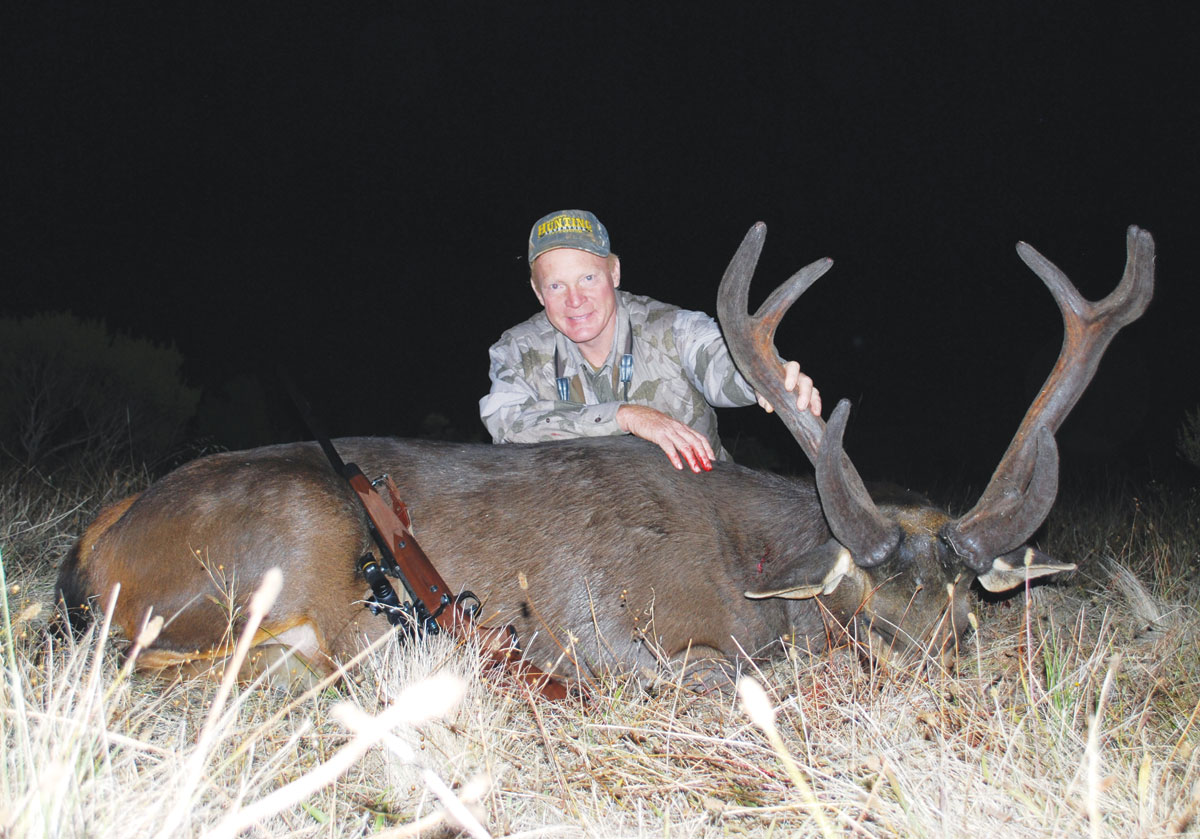 Boddington with a great sambar stag, taken just at dark on the fourth day of a tough hunt. This herd of sambar has been free-ranging along the Central Coast for 80 years, but only recently has access become available.[/caption]
Boddington with a great sambar stag, taken just at dark on the fourth day of a tough hunt. This herd of sambar has been free-ranging along the Central Coast for 80 years, but only recently has access become available.[/caption]
Many introductions have been more recent. A lot of the non-native species in Texas–in a time when whitetail deer had become scarce—-were brought in as ornamental curiosities, without any forethought regarding either conservation or hunting potential. Some introductions were the result of careful study. When the late Frank Hibben headed up New Mexico’s game commission, he had a concept of “habitat niches” unfilled by native game. His successful experiments included Persian ibex, gemsbok and aoudad. Hindsight being a wonderful tool, isn’t it a shame he didn’t experiment with similar species that are now scarce in their native lands, like Walia ibex and scimitar oryx?
Even so, there are many instances today where introduced populations of various species are far more plentiful than on native range, and in some cases offer the only hope for survival. Perhaps the most classic example is Pere David’s deer, which became extinct in China during the Boxer Rebellion in 1900. At that time a herd on the Duke of Bedford’s estate was all that remained in the world, but since then herds of this unusual deer have been established in Argentina, South Africa and the United States—-and Pere David’s deer have been re-established in China. Arabian oryx and scimitar oryx from the United States have been reintroduced into the Arabian Peninsula and North Africa. The Cretan ibex or kri kri was already very scarce on Crete when, just a couple of decades ago, they were introduced onto a couple of Greek islands. Today it is believed that the remnant population on Crete is no longer pure because of
interbreeding with feral goats, but populations have been established in Macedonia and elsewhere.
Whimsical introductions are not always beneficial because of competition with native wildlife and potential habitat destruction, but there are many other good examples of introduced species providing a reservoir for animals that have been diminished or eliminated in their native lands. Obviously zoo populations are another reservoir. There are a number of species that have been saved only in captivity, but zoos tend to have ongoing problems with funding and space limitations. Introduced herds are often self-supporting and self-sustaining through the live capture and sale of breeding stock to create new herds, and trophy hunting of surplus, older males. Some areas, including Argentina, New Zealand and Texas have created major industries from hunting non-native species, and the wildlife has proliferated.
Given a choice, I would always prefer to hunt an animal on its native range. If this isn’t possible, and given a further choice, I would much prefer to hunt free range than estate. However, I freely admit that I have taken species in Texas that I could not take on native range. Perfect examples are both scimitar oryx and addax. It’s highly unlikely that those animals will ever again be hunted in North Africa, and I wanted examples of them with my other oryx. I make no apologies!
Over the years, there have been so many introductions of non-native species that you never know exactly what you might run into. Two years ago, in Argentina’s Sierra de la Ventana, I “discovered” a population of Himalayan tahr. Okay, I didn’t discover anything; they’d been there for 20 years, but nobody in the English-speaking world knew about them. We now have them as a category in our record book, and an addition to the available species in South America.
For some years, I’ve been aware that there was a substantial herd of sambar not far from where I live in California’s Central Coast. They’ve been free-ranging there since the 1930s, but access has been very limited. After years of effort, local guide and taxidermist Don Anderson finally secured permission to take a few older bulls every year. The sambar is one of the most impressive deer in the world, but although widespread in Asia, it is not currently huntable anywhere on native range. So I got on the list!
Honestly, I expected a very easy hunt. This is often the way we think of nonnative species…but it isn’t always that way. (Aoudad, for instance, are never easy wherever you hunt them!) It was not an easy hunt at all. We saw and passed quite a few, but we put in four long days before I finally got a shot at the kind of bull we were looking for. Non-native he might be, but he was a great trophy taken on a memorable hunt. That’s the way hunting introduced species can be, and often is, and I think it’s marvelous that today’s hunting world offers us such opportunities…with conservation of major species often a by-product.

